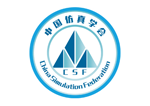Journal of System Simulation
Abstract
Abstract: VOF model and the Realizable k-ε turbulent model are used to simulate the three-dimensional flow field of superhydrophobic microchannels with longitudinal and transverse microstructures in turbulent regime, the effects of structural parameters on the resistance characteristics of superhydrophobic surface are analyzed. The results show that the superhydrophobic microchannels with longitudinal microgrooves exhibit significant reductions in drag; with the increase of the free shear area ratio and the width of the microchannel, the ratio of pressure drop increases, and the average friction factor decreases, as well as the drag reduction effect is highly significant; with the increase of microchannel height, the ratio of pressure drop decreases, and the average friction factor increases; the pressure drop reduction and the average friction factor are slightly dependent on the depth of microgroove. The superhydrophobic microchannel with transverse microgrooves exhibits increasing resistance, and selecting the appropriate microgroove direction of microchannel is important to control the effect of drag reduction.
Recommended Citation
Li, Chunxi; Cui, Qingze; and Ye, Xuemin
(2019)
"Simulation of the Resistance of Superhydrophobic Microchannel in Turbulent Regime,"
Journal of System Simulation: Vol. 31:
Iss.
10, Article 20.
DOI: 10.16182/j.issn1004731x.joss.17-0348
Available at:
https://dc-china-simulation.researchcommons.org/journal/vol31/iss10/20
First Page
2138
Revised Date
2017-09-10
DOI Link
https://doi.org/10.16182/j.issn1004731x.joss.17-0348
Last Page
2145
CLC
O35
Recommended Citation
Li Chunxi, Cui Qingze, Ye Xuemin. Simulation of the Resistance of Superhydrophobic Microchannel in Turbulent Regime[J]. Journal of System Simulation, 2019, 31(10): 2138-2145.
DOI
10.16182/j.issn1004731x.joss.17-0348
Included in
Artificial Intelligence and Robotics Commons, Computer Engineering Commons, Numerical Analysis and Scientific Computing Commons, Operations Research, Systems Engineering and Industrial Engineering Commons, Systems Science Commons

